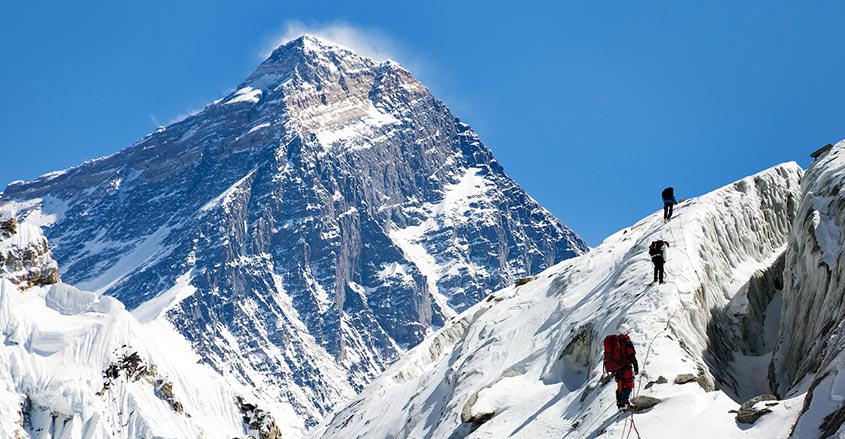Mt. Everest is 29,000 feet above sea level. That is the cruising altitude for commercial airliners. There isn’t enough oxygen for the human body or mind to function properly at that height, which is known as the “death zone.”
Climbing Mt. Everest used to be a trophy experience for adventurous mountaineers and wealthy people. Now, the commercialization of the experience allows anyone with $85,000 to blow to climb the mountain — and possibly die on it.
11 deaths
More than 820 people are vying to climb Everest this season. So far, 11 have died in human traffic jams near the top. Some climbers wait in lines with 100+ people for 12 hours or more.
Climbers are stepping over dead bodies to realize their goal. Elia Saikaly climbed Everest on May 23, 2019 and can attest. “I cannot believe what I saw up there … walking over bodies,” said Saikaly.
What’s worse, climbers who die on Everest can’t be recovered. There isn’t enough oxygen for people to physically move them out of the death zone.
It’s a deadly struggle for people even to take care of themselves. Rescue helicopters barely function above 20,000 feet.
April and May are the best times of the year to climb Everest. However, weather changes rapidly. That can mean only precious hours of opportunity within those few months to realistically climb the highest peak on earth.
Climbers only bring enough supplies and oxygen to climb and descend Everest as efficiently as possible. A delay of minutes or hours can be the difference between life and death.
Climbing inexperience
Some experts say that inexperienced climbers slowing ascents and descents are the cause for so many deaths. Reportedly, some of the 2019 season climbers had never climbed a mountain before. Or, knew how to use climbing gear.
It can cost between $85,000 and $115,000 for professionals to climb Everest. However, unscrupulous budget expedition companies are charging inexperienced adventure seekers, often people with no athletic stamina or climbing experience, as little as $20,000.
An anonymous Nepalese Sherpa interviewed by the Guardian agrees.
“It is mainly due to the carelessness of climbers…The government should ensure that prospective climbers should have prior experience of climbing peaks,” the Sherpa said.
Most climb Everest from Nepal, a developing country with no financial incentive to limit selling climbing permits to wealthy foreigners. That may change now with the current and negative international press.
The Nepalese government is now considering revising permit rules to dissuade inexperienced climbers from applying.
“It’s time to review all the old laws,” said Yagya Raj Sunuwar, a Nepalese politician.


